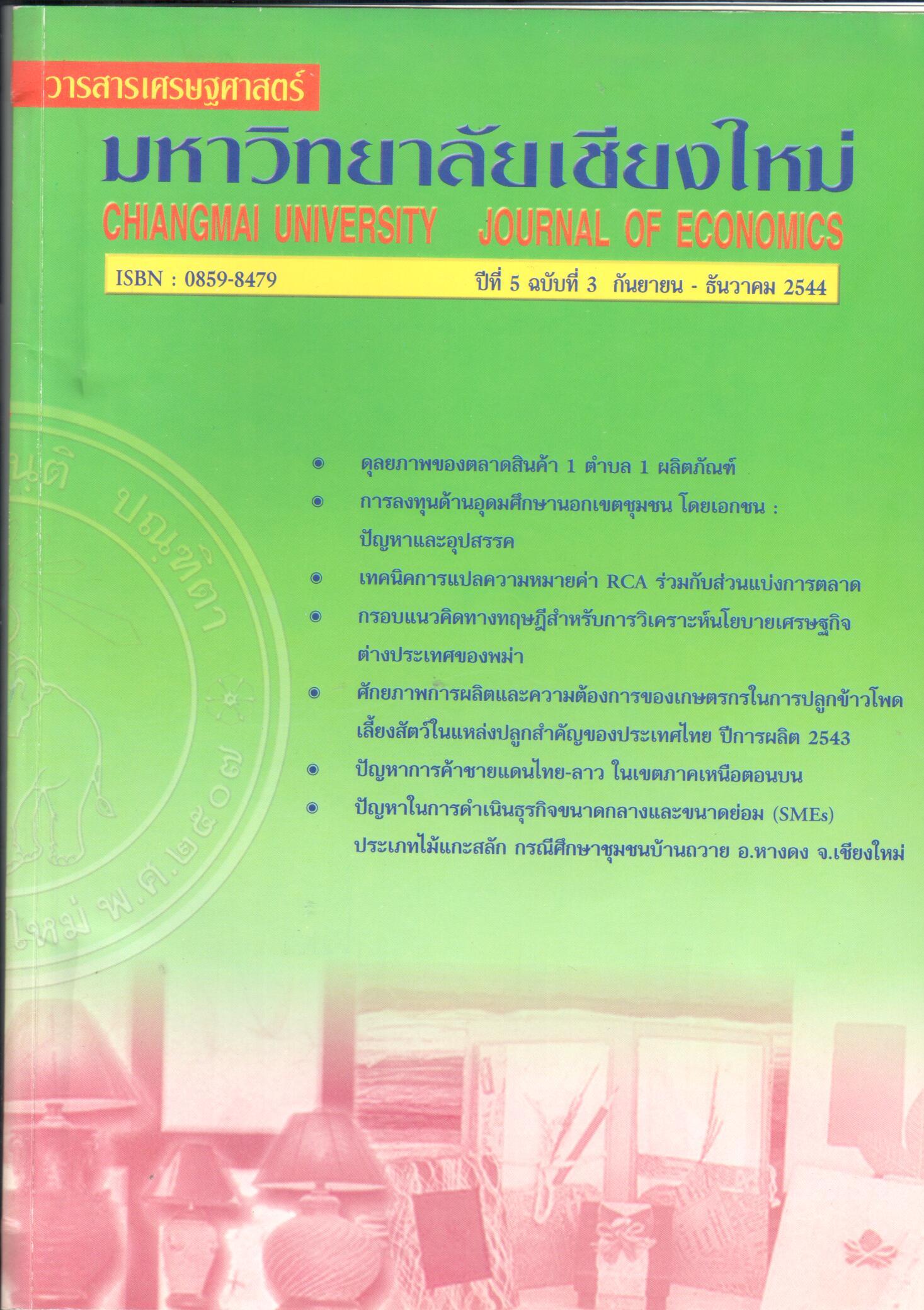ศักยภาพการผลิตและความต้องการของเกษตรกรในการปลูกข้าวโพดเลี้ยงสัตว์ในแหล่งปลูกสำคัญของประเทศไทย ปีการผลิต 2543
Abstract
Abstract
This study has the main objective in assess potentials, alternative and needs of maize farmers in upland and poverty areas within major maize growing areas of Thailand. It used rural rapid appraisal (RRA) and participatory rapid appraisal (PRA) as research method. The study areas included 8 provinces in the Upper North, Lower North, Upper Northeast, Lower Northeast and the Central of Thailand. In each province, a district and a sub-district were chosen as study sites.
The study results disclosed that there were many disadvantages in maize production in remote highland and upload areas compared to lowland areas. These included more expensive inputs, lower input prices, little extension services from government officials or those from the Bank of Agriculture and Agricultural Cooperatives (BAAC). Famers had fewer choices farmers experienced lower yields than production in these areas yielded little profit. In the owner plain, farmers have more choices of crops, higher maize yields, higher prices and lower input prices but still, many farmers experienced lower yields than expected. Generally, maize production in many study areas was not so profitable but maize was still the main crop that farmers would choose. Consequently, the improvement in farmers’ productivity should still be in the policy agendas. For example, these should be an improvement in seed quality to for farmers’ need in different locations. There should also be attempts to increase farmers’ yields and reduce their production costs. Measures to improve maize production include 1. Choice of maize varieties appropriate to local physical and climate condition in each season or to choose lower-priced varieties to further reduce costs 2. Reduction of current seed rate to reduce seed costs and labor costs thinning 3. Better fertilizer application methods 4. Introduction of crop rotation methods to farmers who have soil fertility problem 5. Demonstration of crop rotation methods in sloping land 6. Expansion of low-cost credit to enable farmers to have adequate capital for production and free them from exorbitant interest rates incurred from reliance on informal credit.
Downloads
Issue
Section
License
All opinions and contents in the CMJE are the responsibility of the author(s). Chiang Mai University Journal of Economics reserves the copyright for all published materials. Papers may not be reproduced in any form without the written permission from Chiang Mai University Journal of Economics.
ข้อคิดเห็นที่ปรากฏและแสดงในเนื้อหาบทความต่างๆในวารสารเศรษฐศาสตร์มหาวิทยาลัยเชียงใหม่ ถือเป็นความเห็นและความรับผิดชอบโดยตรงของผู้เขียนบทความนั้นๆ มิใช่เป็นความเห็นและความรับผิดชอบใดๆของวารสารเศรษฐศาสตร์ มหาวิทยาลัยเชียงใหม่
บทความ เนื้อหา และข้อมูล ฯลฯ ในวารสารเศรษฐศาสตร์มหาวิทยาลัยเชียงใหม่ ถือเป็นลิขสิทธิ์เฉพาะของคณะเศรษฐศาสตร์มหาวิทยาลัยเชียงใหม่ หากบุคคลหรือหน่วยงานใดต้องการนำทั้งหมดหรือส่วนหนึ่งส่วนใดไปเผยแพร่ต่อหรือเพื่อกระทำการใดๆ จะต้องได้รับอนุญาตเป็นลายลักษณ์อักษร จากวารสารเศรษฐศาสตร์ มหาวิทยาลัยเชียงใหม่






